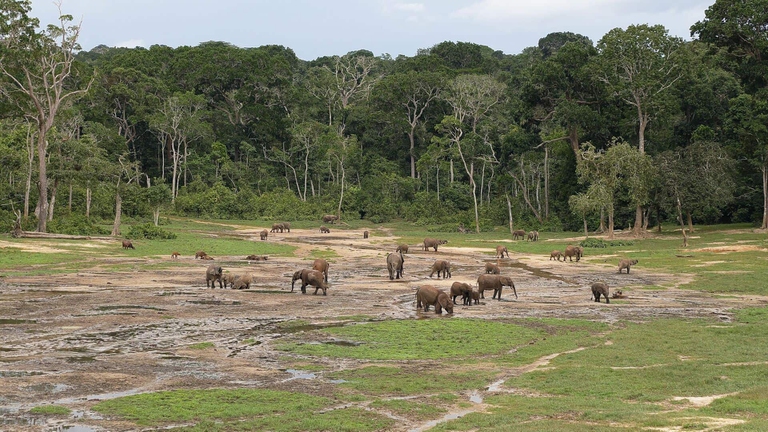https://www.lifegate.it/living-planet-report-wwf-animali-selvatici
- |
- Through the Living Planet Report, the WWF monitors the average size of global populations of 5,495 species of wild vertebrates.
- In fifty years, from 1970 to 2020, the collapse was 73 percent.The ecosystems most in difficulty are freshwater ones.
- The data arrives a few weeks after two fundamental events:COP16 on biodiversity and COP29 on climate.
Catastrophic.This is the adjective chosen by the World Wide Fund for Nature (Wwf) to describe the decline in the average size of global populations of 5,495 species of wild vertebrates object of monitoring.According to the2024 edition of the biennial report Living planet, in fact, the collapse was equal to 73 percent over fifty years, from 1970 to 2020.Data that brings us dangerously close to the point of no return.
Data from the WWF Living Planet Report
The WWF Living Planet Report processes the data collected by monitoring sites on almost 35 thousand populations of 5,495 species of wild vertebrates.Not all are in decline:some are stable, others are even increasing, depending on the type of species and the region of the world in which it lives.The report tracks theirs relative abundance, that is, their changes over time:there may be populations that are numerically very small but remain stable for years or, vice versa, very abundant populations that see a collapse.
Looking at the global average, we discover that, in fact, over the course of fifty years the size of the monitored animal populations has reduced by almost three quarters.The range goes from minus 67 to minus 78 percent:the average is therefore 73 percent and corresponds to a decline by 2.6 percent each year.This is worrying, because long-term stable populations make ecosystems more resilient, even in the face of the climate crisis.
Above all, freshwater ecosystems are suffering
In reality there are three indices in the Living planet report, relating respectively to terrestrial, freshwater and ecosystems marine.They are all decreasing, but at different rates.For i seas the decline is 56 percent in fifty years and therefore corresponds to a minus 1.6 percent per year:this is because some fish stocks have shown signs of recovery and others have remained stable, also thanks to measures to limit the pressure exerted by fishing.However, the decline of some species, including sharks and rays, remains worrying.For some of them, not even living in a marine reserve is a guarantee:this is the case of hawksbill turtle in the Great Barrier Reef, whose nesting population has suffered a decline of 57 percent.
The terrestrial ecosystems, such as forests, deserts and prairies, show a similar trend to the global one (minus 60 percent).For some large, iconic animals, the most serious threat is poaching:this is the case of African forest elephants which today are critically endangered, especially in the Minkébé national park in Gabon.But conservation interventions, if they are courageous and shared, work:i demonstrate it mountain gorilla of the Virunga massif, whose average increase was 3 percent per year between 2010 and 2016.
The most serious data is that relating to freshwater ecosystems which show a minus 85 percent:the decline is therefore 3.8 percent each year.A large part of the responsibility lies with habitat alterations that block the migratory routes of fish, causing the relative abundance of their populations to collapse by 81 percent.This is the case of Chinook salmon that every winter go up the Sacramento River, or rather went up, given that the dams prevent them from reaching the stretch of river where the water is cold enough to allow them to lay their eggs.Their numbers plummeted by 88 percent from 1970 to 2022, fluctuating from year to year.

Towards COP16 on biodiversity and COP29 on climate
Data that cannot leave anyone indifferent, especially as two key events are approaching:there Cop16 on biodiversity which will be held in Cali, Colombia (October 21-November 1) and the Cop29 on the climate in Baku, Azerbaijan (November 11-22).The two crises, that of biodiversity and that of climate, are intertwined and interdependent between them.On the one hand, in fact, the increase in temperatures and extreme weather events they force animals to migrate or change their habits, they alter the environmental signals that regulate, for example, their migration and reproduction, they create ideal conditions for invasive alien species.On the other hand, ecosystems "emptied" of their wildlife are weaker in the face of external shocks.
“The Earth system is in danger, and we with it,” he thunders Alessandra Prampolini, general director of WWF Italy.“The decisions and actions of the next five years will shape the future of our lives on the planet. The key word is transformation:we must change the way we protect nature, transform the energy system, the food system, one of the main drivers of global biodiversity loss, the financial system, directing it towards more equitable and inclusive investments".The two COPs, in this sense, are precious opportunities:Courageous actions and strong leadership from governments are needed."
